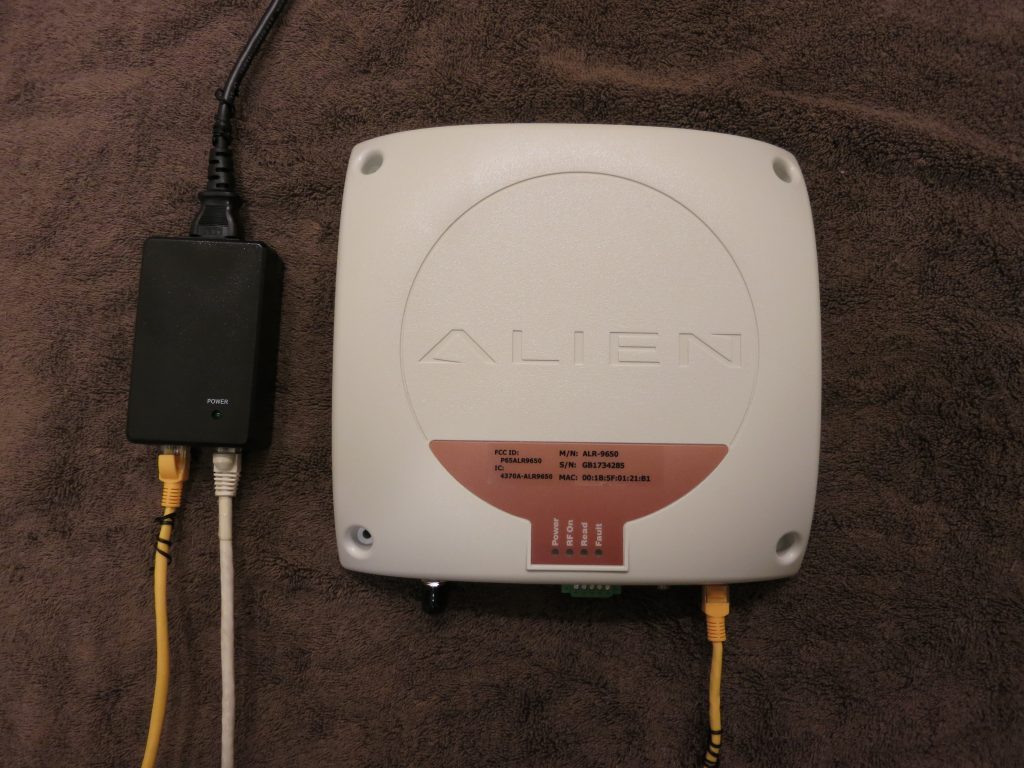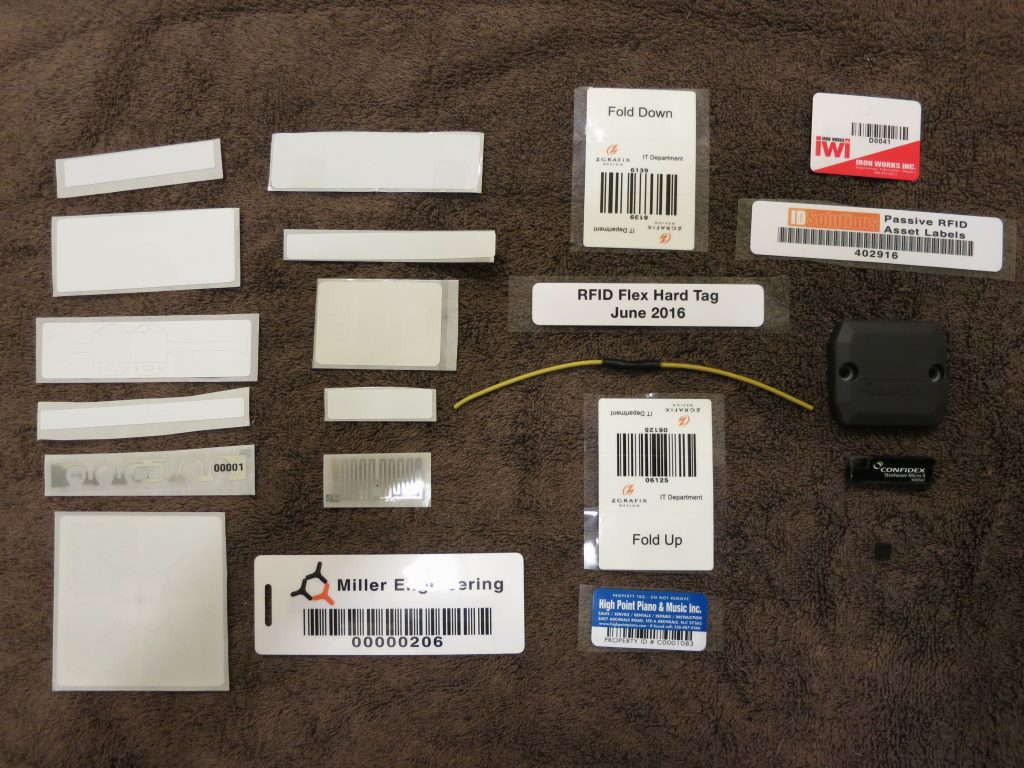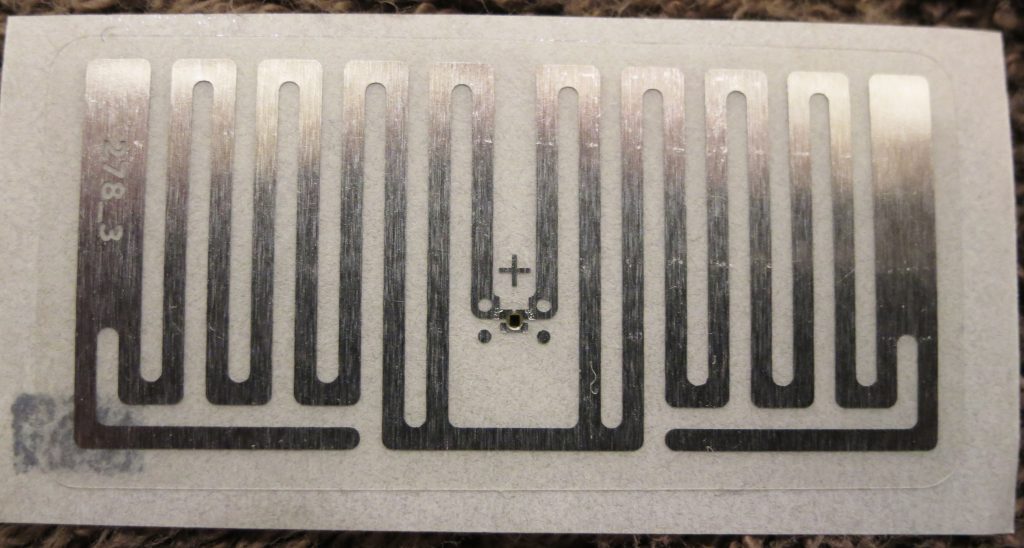 This device is an Alien Technology ALR-9650 RFID reader. It can read unpowered RFID tags from over 20 feet away. I am working on an RFID project at the moment, so I have one to play with.
This device is an Alien Technology ALR-9650 RFID reader. It can read unpowered RFID tags from over 20 feet away. I am working on an RFID project at the moment, so I have one to play with.
 Here is a collection of RFID tags. Most of these are badges or labels, one is a wire dipole, and there are a few plastic boxes. Each one contains a 96-bit serial number which can be remotely read.
Here is a collection of RFID tags. Most of these are badges or labels, one is a wire dipole, and there are a few plastic boxes. Each one contains a 96-bit serial number which can be remotely read.
 Here are some close-ups of tags. Each tag has a tiny chip and an antenna. They do not have batteries.
Here are some close-ups of tags. Each tag has a tiny chip and an antenna. They do not have batteries.
This type of RFID is basically radar. The reader sends out a pulse of up to 4 watts in the 902-928 MHz range. The chip in the tag rectifies the received energy, using it to power some simple digital logic. The tag responds to the reader by varying the load on its antenna, so that the strength of the reflected signal toggles between high and low levels.
When there are many tags in range, there is a problem of them all talking at once. The reader handles this for you, using a complex algorithm to make a subset of the tags respond so it can identify each one.
 This reader has Ethernet, a serial port, and some general purpose I/O. It can read on a trigger input, or trigger an output when it detects a tag. It requires either power-over-Ethernet or a proprietary 24-volt DC supply. There is an external antenna connector, which I have not tried. The reader runs Linux internally, and you can observe the boot sequence over the serial port.
This reader has Ethernet, a serial port, and some general purpose I/O. It can read on a trigger input, or trigger an output when it detects a tag. It requires either power-over-Ethernet or a proprietary 24-volt DC supply. There is an external antenna connector, which I have not tried. The reader runs Linux internally, and you can observe the boot sequence over the serial port.
The programming interface is a proprietary command line over telnet or serial. You can either manually ask for a list of tags, or set the reader to automatic polling mode. In automatic mode, the reader connects to a listening TCP port on your server and reports in when it detects tags. The reader can report the received signal strength of each tag, which increases as the tag gets closer to the reader. There are a lot of configuration options.
The reader’s built-in antenna is very directional, with a cone-shaped pattern from its front. Several of these tags would reliably read over 20 feet away indoors. Holding a tag close to your body reduces the range substantially. It was easy enough to write an RFID application using the Perl sockets interface.
Most of the tags can be written to. Within a foot or so, the reader can change the 96-bit identifier on a tag. Some tags also have a small amount of user memory, such as 64 bytes for the wire dipole tag. Some tags have passwords to restrict reading and writing of parts of the memory.
This passive radio technology was originally invented for surveillance bugs. The bug uses little or no power, and emits no signal of its own. When the spies want to listen, they aim a directional antenna at the bug and bounce a signal off it. The advantage is that the bug lasts a long time and is hard to detect. The downside is that the transceiver is very detectable, and will lead any bug-hunters right to the listening post.
